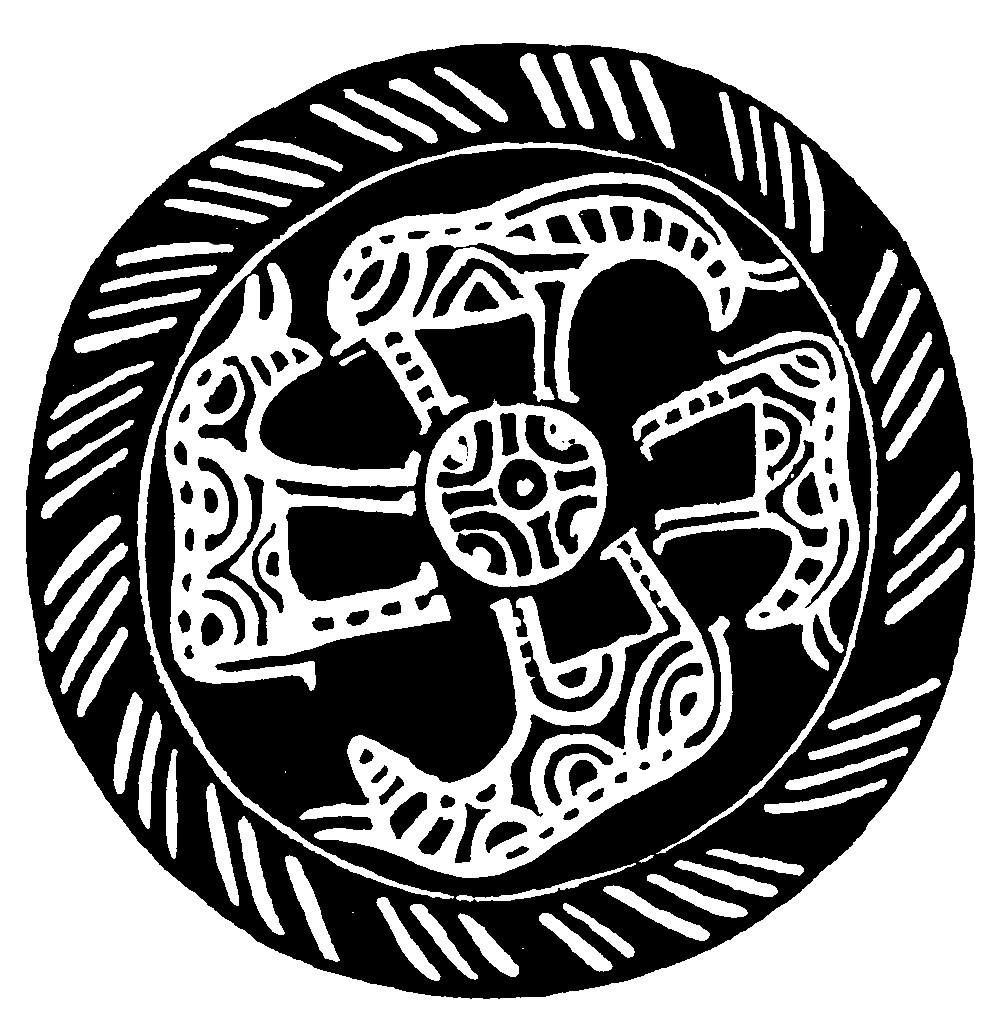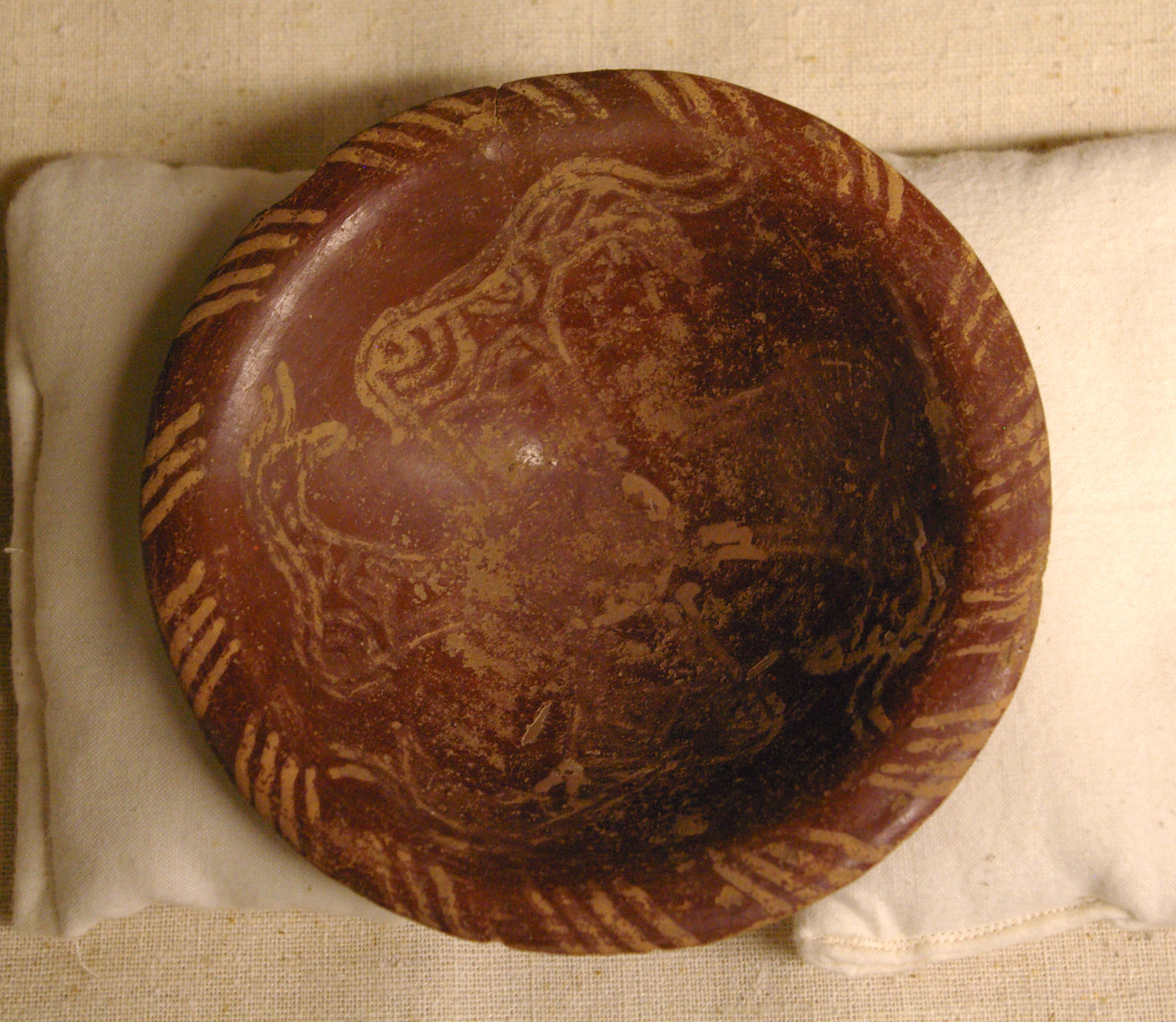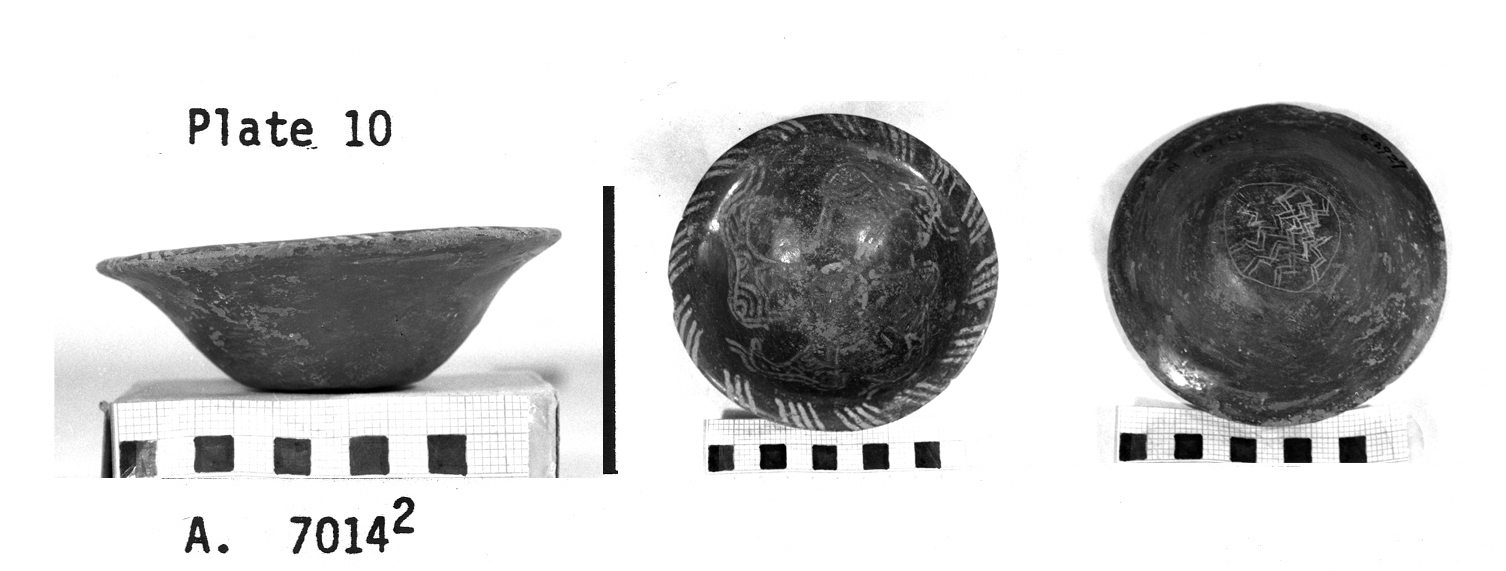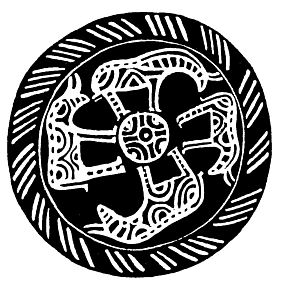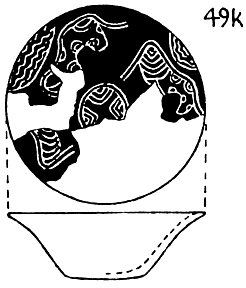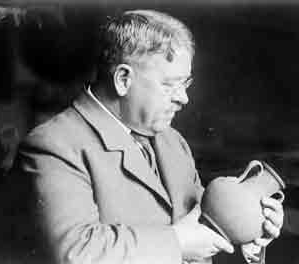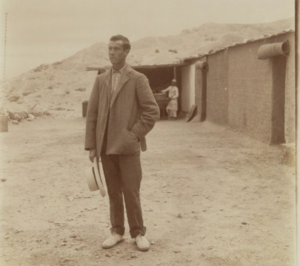C-Ware – shallow bowl C-0201
By Droux, Xavier
, Tomb 7014.
1901 : Hearst Egyptian Expedition excavation.Berkeley, Phoebe A. Hearst Museum of Anthropology, 6-2927.
Date : Naqada IA–IIB
General range of C-ware production
Material : Nile silt (Painted)
Preservation : Complete
Decoration preservation : Partially faded
Preservation information :
The surface is heavily eroded in parts, especially along the rim and one side of the interior.
Description
The base of the vessel is decorated with incised decoration that consits of a circle filled with double zigzag motifs.
Decoration
The flairing rim is decorated by groups of three to four parallel oblique lines. Below (note that there is no concentric line between the rim and interior of the lower part of the bowl), four animals facing right follow one antother. Their bodies are filled with broadly concentric motifs. Each animal has two parallel, upturned, crescent-shaped horns protruding from the forehead and a fairly long tail. Identifying the species is not easy; bulls have been proposed, but one cannot necessarily exclude that the 'horns' may in fact be the long ears of donkeys. A circle at the bottom of the vessel is filled with four semi-circular motifs that connect to an inner circle; there seems to be a dot at the centre.
Dimensions (cm)
4
12.3
12.3
Additional information
Open
Vi 308
Oi 100
flat base
Inside
References
1965
The predynastic cemetery N7000. Egyptian Archaeology VII; Naga-ed-Dêr IV. Berkeley & Los Angeles
, 8, fig. 3.1981
Spatial distribution in a predynastic cemetery: Naga ed Dêr 7000. MA dissertation, University of California. Berkeley
, pl. 10A.2002
Bovines in Egyptian predynastic and early dynastic iconography, in: Hassan, Fekri A. (ed.), Drought, food and culture: ecological change and food security in Africa's later prehistory. New York & London
, 305, App. A, no. 2.2009
Les peintures sur vases de Nagada I–Nagada II: nouvelle approche sémiologique de l'iconographie prédynastique. Egyptian Prehistory Monographs 6. Leuven
, 142, pl. 6.18, cat.27.2019
Le taureau à l’époque prédynastique et son importance pour le développement de l’iconographie royale – avec un excursus sur l’origine du sceptre héqa, in: Aufrère, Sydney (ed.), Les taureaux de l’Égypte ancienne. Publication éditée à l’occasion de la 14e Rencontre d’égyptologie de Nîmes. Égyptonimes 2
, 36–37, fig. 2.2021
Found in a cellar, but from Naqada? A new predynastic hunting scene on a C-ware fragment from the Garstang Museum of Archaeology, Liverpool, in: Claes, Wouter; De Meyer, Marleen; Eyckerman, Merel; Huyge, Derek † (eds), Remove the pyramid! Studies on the archaeology and history of predynastic and pharaonic Egypt in honour of Stan Hendrickx. Orientalia Lovaniensia Analecta 305. Leuven
, 401.